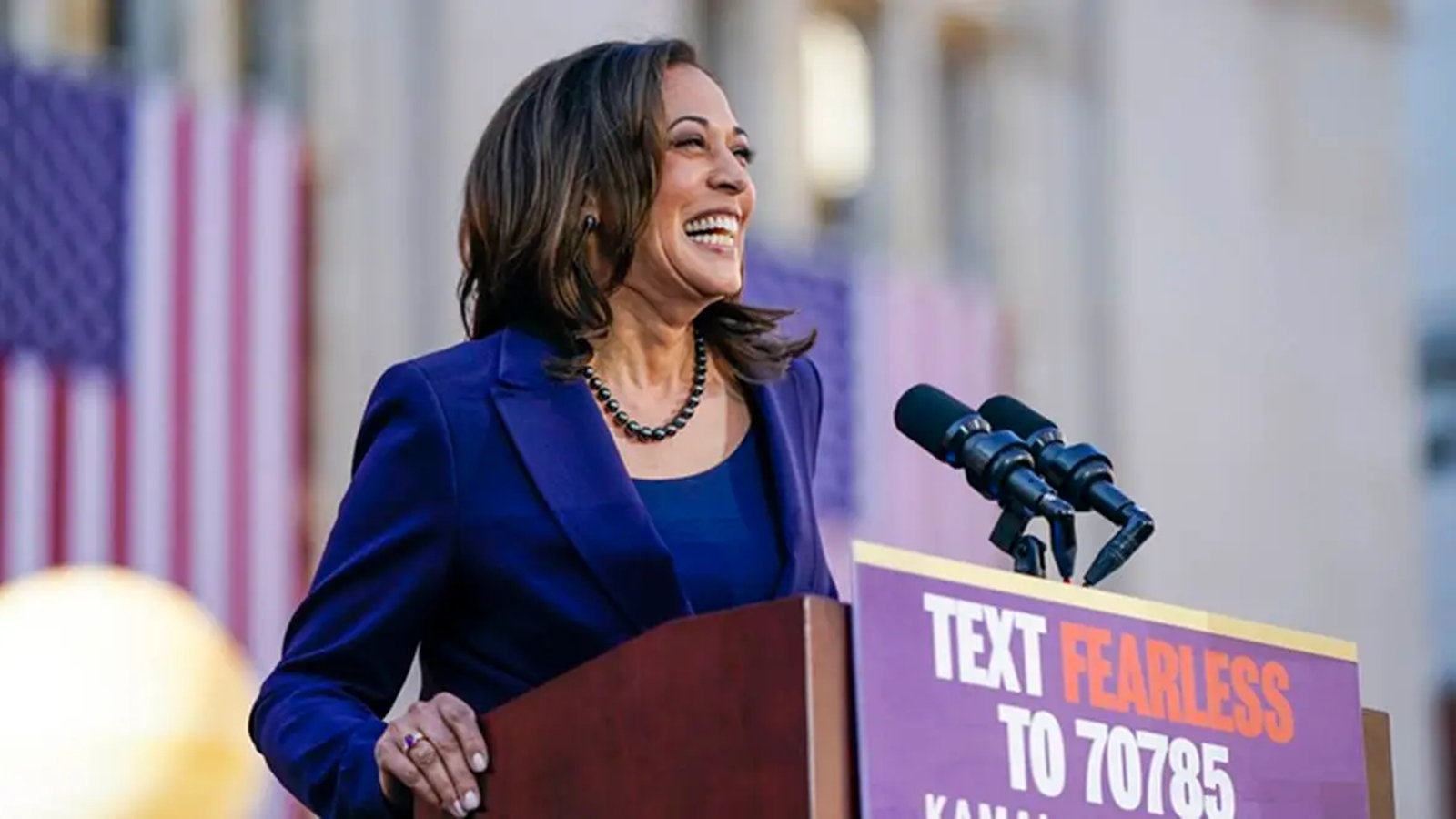On November 5, I will be a first-time American voter. By the looks of it, I’ll be voting for a candidate who shares my grandmother’s first name.
Vice President Kamala Harris is now the Democratic Party’s presumptive presidential nominee. To many Indians at home and in the diaspora, the vice president’s arrival at the forefront of the presidential election has brought on many feelings. For those in the country, living through a deeply nationalistic moment, this is another step into the world. For Indian Americans, it feels more like coming home.
The Indian-American community of today largely traces its beginnings to the 1960s. In 1965, the Immigration and Nationality Act abolished national origin, race and ancestry as bases for immigration into the US. Instead, it permitted immigrants on what then President Lyndon B Johnson called their “merit as [men.]” As a result, foreign professionals, whose skills would benefit the US, were ushered in. A significant section of this group came from India, where, after two centuries of colonial rule, huge investments were made in developing a graduate and professional class.
My maternal grandparents were a part of this first flush of Indian immigrants to the US. Both doctors, they graduated at the top of their class in the Calcutta National Medical College and moved to the US. They raised three children in the US and eventually became American citizens. Even though they remain deeply Indian, both in behaviour and belief, they are grateful for the home that the US has provided them for 50 years.
Like my grandparents, I grew up in India. I was born in Delaware and moved to the IIT Kharagpur campus when I was two. We returned to Delaware each summer to a 1950s-style bungalow that’s been ours since before I was born. Growing up, I felt rooted in both India and America.
For each of the four US presidential cycles following my move, I watched from afar. At four, I didn’t understand the paradigm shift that Barack Obama’s 2008 win was — its significance dawned on me after witnessing the entirely opposite direction that 2016 took. The next four years challenged my perception of both the US and my place in it.
Joe Biden’s 2020 victory renewed my sense of belonging, not least because, Biden, Delaware’s golden boy, had alongside him Kamala Harris: A woman who shares a past and a name with my family.
With her, the US had many firsts: The first vice president to be a woman; the first Black, Asian and South-Asian vice president. Because of her, for the first time, I also saw myself in American politics.
And because I did, because I do, I am torn between awe and apprehension.
Harris has been a part of an effective presidential term. In the three-and-a-half years since Biden and she came into office, they have overseen the mass distribution of Covid-19 vaccines, passed legislation that has dropped the unemployment rate in the US to the lowest it’s been since 1969, and created the most significant gun regulation of the past 30 years. Under them, the US rejoined the Paris Climate Agreement and passed the Bipartisan Infrastructure Bill that has funnelled huge investments into public infrastructure.
Yet, as effective as their partnership has been, I worry that by herself, Harris may not have everything that made her and Biden such a good team. Joe Biden is a veteran politician; an establishment man who managed to get things done by calling on relationships he’s built over five decades. He also happens to be a White man.
Kamala Harris is a biracial Black and Indian-American woman. I don’t know how the country will react to her — even if she does win. It’s uncomfortable to put this into words because it reflects a feeling I have about myself and who I am to America.
Perhaps, the best thing to do right now is mark the significance of this moment. Whatever happens in November, Kamala Harris’s place at the top of the presidential ticket is a celebration of American and Indian plurality, both of which, at present, are fighting against forces that attempt to condense and abbreviate them.
The writer is a second-year student of mathematics and journalism at Duke University, USA



